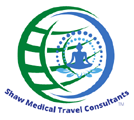HOW TO FIND THE RIGHT SPECIALIST.
In this blog we will talk about the tools you need to select the right physician for you. We’ll start with general questions, inquiries and background information you should check on and know about all your physicians and then subsequently fine-tune some details related to certain specialties.
First for the general information:
- Verify the physician’s credentials and that they are active, Do a Google and social media search including LinkedIn.
- Verify that the credentials are universally active, in other words a physician may be working in a different country.
- Verify that the credentials are universally active, in other words a physician may be working in a different country having had his license revoked in a different country or state.
- Understand that sometimes physicians may have tainted license, malpractice suits in the past but this does not necessarily indicate that they are not good physicians, so it’s important to learn the details.
- Find out who will be cross covering for the physician in his or her absence and the details of this position and their capacity.
- Find out if there are physician extenders such as nurse practitioners or physician assistants that are working alongside the physician and whom you may see. It’s important to understand how often you will be interacting with this person as opposed to the physician.
- Inquire what the process is to reach the physician specifically as opposed to a physician extender. At this time make it very clear if you are uncomfortable with seeing a physician extender and request only to see the physician – as you are paying for his for her services, they should comply with your wishes.
- What is the process for caring for you if you have chronic medical conditions and you need medication management – who is going to do this and when will you be meeting this person before your procedure.
- Ask your physician how many of the requested procedures has he or she performed over what period of time and inquire about the success rate.
- Ask for references – Ask if you could speak with a former patient if you’re interested – if the physician refuses this should be a red flag.(note that privacy laws apply and the former patient will have to have previously authorized this).
- Investigate the location (hospital or outpatient facility) where procedures and surgeries will be performed. It’s important to make sure these facilities are adequately credentialed which would indicate they comply with quality expectations amongst other requirements.
- Ask about his or her position on pain medication prescribing and refill process.
- Ask if the physician will provide follow-up documentation to your primary physician if you want or will they provide you with a copy of your records.

RED FLAGS
There are some red flags to know about when interviewing a physician for your procedure that you need to be aware of and alter your plans accordingly – meaning you may choose to continue with the physician or change.
- The physician is not open to any of your questions and refers you to hey website or printed documentation. although this is helpful it is important to have the comfort of being able to speak with your physician and this indicates the amount of time and investment the physician places in the value of a patient physician relationship.
- There are multiple malpractice lawsuits resulting in culpability of the physician.
- The physician previously had license revoked in other places – countries or states.
- The physician has not maintained continuing medical education or current certification.
- The physician and or staff is not willing to review billing practices.
- There is no internal medicine physician who will take care of your chronic medical conditions if any medical non-surgical complications should arise.
- The physician refuses to provide information on 6 of past successful and unsuccessful cases.
- The physician refuses to provide references or authorize you too speak with other former patience (assuming there is a patient privacy document in place, signed and authorized).
- There are no provisions for coverage when the physician is unavailable eg. on vacation.
- There are no subspecialty physicians on staff at the facility where the procedure or care will be provided in the event of complications, these physicians include a lung doctor (pulmonologist),heart doctor (cardiologist), or other specialties as necessary.
- The facility/hospital where procedures are performed has not met the quality standards in the country requesting. understanding that countries outside of the United States may not qualify for the same quality certifications but there is an equivalent certification that they have indicating they have met quality expectations. (the equivalent to NCQA, JCAHO, JCI, TEMOS for example). It is OK to make decisions based on how a hospital or facility looks to you – use your gut feeling.
- They refuse to share the infection rate, or they have an unusually high infection rate at the hospital.
- The position does not allow for provision of pain medication. note that this is a very controversial and sticky area in health care currently, so most practices will have a very stringent, strictly regulated policy for pain medication prescription and refills which you will be required to review and sign or accept – this is OK. However, the physician office stating that they will not prescribe, or refill pain medications is not OK, as these medications may be necessary.
- There is no post-operative process or procedure in place.
- Make sure that you understand the pre, intra and post-surgical treatment which may include blood thinners, are there devices to prevent blood clots, therapy – physical or occupational depending on needs.
PLASTIC SURGEON

- Best to try to find a physician with a good bedside manner and patient rapport – bodes well if complications should arise later.
- The physician and staff should provide customized tailored treatment options and spend time designing you are specific treatment. all your questions should be answered and whatever time it takes to make changes should be provided.
- An established physician should have a good electronic medical record system which helps to design your personal treatment program to give you a good image of what you’re expected to see, this is better than a written documents or drawing.
- https://www.facs.org/education/resources/residency-search/specialties/plastic
- https://www.americanboardcosmeticsurgery.org/patient-resources/cosmetic-surgery-vs-plastic-surgery
CARDIOVASCULAR (HEART) SURGEON

- There is a cardiologist who works alongside the cardiovascular surgeon and they communicate with you to your liking giving you enough time for discussion and questions.
- There are qualified technicians to provide related services such as echocardiogram, ultrasound, nuclear stress test, regular Bruce protocol stress test.
- Ensure what expectations should be regarding physical activity after the procedure.
- What adequate patient information will be provided for you to read and are diagrams provided regarding the anatomy of your heart or vessels and what operation is needed.
- Adequate preoperative evaluation and postoperative course has been explained to you thoroughly as well as which medicine is to continue and or stop.
- Is a cardiac rehabilitation program recommended and if so, can they refer one? If one is not readily available, can you be instructed on exercises to do or is there a video provided for this purpose?
- https://vascular.org/patient-resources/what-vascular-surgeon
ORTHOPEDIC (Bone) SURGEON

- Ensure that you like the bedside manner of your physician and staff.
- Ask questions related to the duration of surgery expected (understand that it is impossible to anticipate exactly). The type of anesthesia to be used and request to meet with the anesthesiologist prior. Find out whether a nurse anesthetist or an anesthesiologist (a physician) Will be attending your case.
- Find out whether antibiotics will be given before the procedure.
- Inquire about the post-operative management, specifically related to therapy required and duration.
- Inquire about expected outcomes, expected recovery time and level of function expected after surgery and therapy and also any potential limitations after surgery.
- https://www7.aaos.org/member/directory/definition.htm


